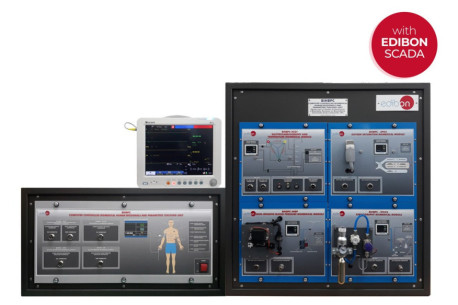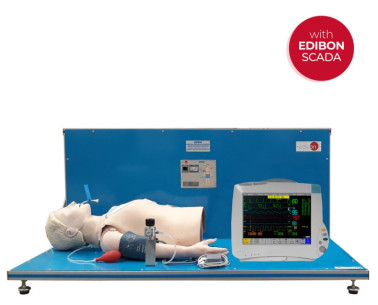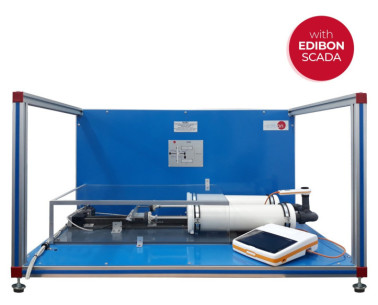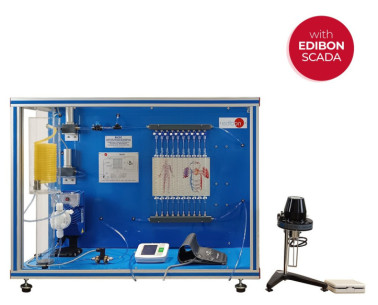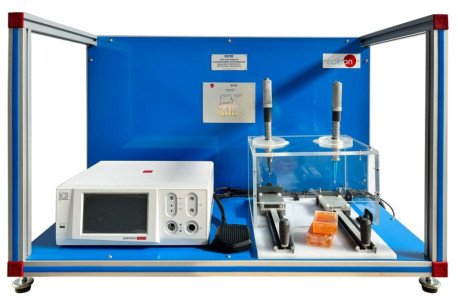- Startseite
- Produkte
- 1.- PHYSIK
- AKADEMISCHE PROGRAMME
- HÖHERE TECHNISCHE AUSBILDUNG
- LEBENSMITTELTECHNIK
- TOPOGRAPHIC ENGINEERING
- GEOLOGIE
- FOREST ENGINEERING
- UMWELTTECHNIK
- ÖKOLOGISCHES ENGINEERING
- TEXTILE ENGINEERING
- ENGINEERING FÜR DIE LANDWIRTSCHAFT
- MASCHINENBAU
- CHEMISCHE
- CHEMIEINGENIEURWESEN
- VERFAHRENSTECHNIK
- GEOLOGISCHE, BERGBAU- UND ÖLTECHNIK
- PETROLEUM-AUSBILDUNGSZENTRUM
- MEERESTECHNIK
- LANDWIRTSCHAFTLICHE TECHNIK
- ELEKTROTECHNIK
- DIE ARCHITEKTUR
- INFORMATIK UND INGENIEURWESEN
- NUKLEARTECHNIK
- AUTOMATISIERUNGATECHNIK
- ENERGIETECHNIK
- ZENTRUM FÜR ENERGIETRAINING
- ELEKTROTECHNIK
- SYSTEMS ENGINEERING
- LUFTFAHRTTECHNIK
- MARINE WISSENSCHAFTEN
- PHYSIK
- WIRTSCHAFTSINGENIEURWESEN
- INTERNATIONALES ZENTRUM FÜR TECHNISCHE AUSBILDUNG, ENTWICKLUNG UND FORSCHUNG
- WERKSTOFFTECHNIK
- METALLURGISCHE TECHNIK
- BAUINGENIEURWESEN
- TELEKOMMUNIKATIONS-INGENIEURWESEN
- THERMOTECHNIK
- TECHNISCHE SCHULEN
- ELEKTRONIK
- KOMMUNIKATIONSTECHNIK
- ELEKTRIK
- INFORMATIK UND INGENIEURWESEN
- AUTOMOBILTECHNIK
- BAUINGENIEURWESEN
- MECHANIK UND HERSTELLUNG
- MECHANISCH UND METALL
- STRÖMUNGSMECHANIK
- KÜHLUNG UND KLIMAANLAGE
- INDUSTRIELLE CHEMIE
- CHEMISCHE
- LEBENSMITTELTECHNIK
- LANDWIRTSCHAFT
- AGROINDUSTRIE
- INSTANDHALTUNG
- MARITIME UND FISCHEREI
- LUFTFAHRZEUGINSTANDHALTUNG
- INSTRUMENTIERUNG UND REGELUNG
- UMWELT
- TECHNOLOGIE
- BAUTECHNOLOGIE
- ELEKTROMECHANISCHE TECHNOLOGIE
- STRUKTURDESIGN-TECHNOLOGIE
- INDUSTRIEPRODUKTIONSTECHNOLOGIE
- INFORMATIONSTECHNOLOGIE
- QUALITÄTSKONTROLLE
- ENERGIESYSTEMTECHNOLOGIE
- BERGBAU- UND PETROLEUMTECHNOLOGIE
- TECHNIK FÜR NATURGAS
- ERNEUERBARE ENERGIEN
- TELEKOMMUNIKATIONSTECHNOLOGIE
- MECHANISCHE TECHNOLOGIE
- WINDENERGIETECHNOLOGIE
- KERNTECHNOLOGIE
- PROZESSKONTROLLTECHNOLOGIE
- ALLGEMEINE DIENSTLEISTUNGSTECHNOLOGIE
- LABORTECHNOLOGIE
- AUTOMATION UND MECHATRONIK
- TRANSPORT UND LOGISTIK
- HÖHERE TECHNISCHE AUSBILDUNG
- 2.- ELEKTRONIK
- 3.- KOMMUNIKATIONSTECHNIK
- 4.- ELEKTRIK
- 5.- ENERGIETECHNIK
- 5.1.- SMART GRIDS UND POWER SYSTEMS
- 5.2.- MIKROGRIDE
- 5.3.- ERNEUERBARE ENERGIEN
- 5.3.1.- PHOTOVOLTAISCHE SOLARENERGIE
- 5.3.2.- SOLARTHERMISCHE ENERGIE
- 5.3.3.- WINDENERGIE
- 5.3.4.- MEERESENERGIE
- 5.3.5.- GEOTHERMISCHE ENERGIE
- 5.3.6.- HYDRAULISCHE ENERGIE
- 5.3.7.- BIOKRAFTSTOFFE
- 5.3.8.- ENERGIESPEICHERSYSTEME
- 5.3.9.- WASSERSTOFFKRAFTSTOFFZELLEN
- 5.3.10.- DAMPFTURBINEN UND ORGANIC RANKINE CYCLES
- 5.3.11.- ANDERE NICHTKONVENTIONELLE SYSTEME
- 5.4.- KONVENTIONELLE ENERGIEN
- 5.5.- ENERGIESPEICHER
- 5.6.- HOCHSPANNUNGS- UND ELEKTRISCHE SCHUTZSYSTEME
- 5.7.- INSTALLATIONEN UND WARTUNG
- 6.- MECHATRONIK UND AUTOMATISIERUNG
- 7.- MECHANIK
- 8.- STRÖMUNGSMECHANIK
- 9.- THERMODYNAMIK & THERMOTECHNIK
- 9.1.- GRUNDLAGEN UND GRUNDKONZEPTE DER THERMODYNAMIK
- 9.2.- HEIZUNG, BELÜFTUNG, KLIMAANLAGE UND HEISSES WASSER
- 9.3.- WÄRMEPUMPEN
- 9.4.- KÜHLUNG
- 9.5.- THERMISCHES HYDRAULISCHES LEITUNGSSYSTEM
- 9.6.- WÄRMEÜBERTRAGUNG
- 9.7.- WÄRMETAUSCHER
- 9.8.- THERMISCHE MASCHINEN
- 9.9.- VERBRENNUNGSMOTOREN
- 9.10.- INSTALLATIONEN UND WARTUNG
- 10.- PROZESSSTEUERUNG
- 11.- CHEMIEINGENIEURWESEN
- 11.1.- EINHEITSBETRIEB
- 11.1.1.- FLUIDIZATION
- 11.1.2.- EVAPORATION
- 11.1.3.- BOILING
- 11.1.4.- DISTILLATION AND CRACKING
- 11.1.5.- EXTRACTION
- 11.1.6.- DIFFUSION
- 11.1.7.- DRYING AND COOLING
- 11.1.8.- ABSORPTION AND ADSORPTION
- 11.1.9.- ION EXCHANGE AND CORROSION
- 11.1.10.- CRYSTALLIZATION AND PYROLYSIS
- 11.1.11.- FILTRATION, SEDIMENTATION AND MIXING
- 11.1.12.- SOLIDS TREATMENT
- 11.2.- CHEMISCHE REAKTOREN
- 11.1.- EINHEITSBETRIEB
- 12.- NAHRUNGSMITTEL- UND WASSERTECHNOLOGIE
- 13.- UMWELTTECHNIK
- 14.- BIOMEDIZINTECHNIK
- 14.1.- BIOMECHANIK
- 14.1.1.- MECHANICS FUNDAMENTALS KITS
- 14.1.2.- EINFACHE MASCHINEN
- 14.1.3.- STATIK UND DYNAMIK
- 14.1.4.- VIBRATIONEN UND OSZILLATIONEN
- 14.1.5.- TRIBOLOGIE (REIBUNG, TRAGUNG, SCHMIERUNG)
- 14.1.6.- STRUKTURMECHANIK
- 14.1.7.- FOTOELASTIZITÄT UND STRAIN-MESSUNG
- 14.1.8.- MECHANISCHE TESTS
- 14.1.9.- THERMISCHE UND AKUSTISCHE PRÜFUNGEN
- 14.2.- BIOMEDIZINISCHE ELEKTRONIK
- 14.3.- BIOMEDIZINISCHE AUSRÜSTUNG
- 14.1.- BIOMECHANIK
- LABORZUBEHÖR
- MAßGESCHNEIDERTE PILOTANLAGEN
- MODULEN
- ERWEITERUNGEN
- LABORATORIEN
- Geschäftslinien
- Technologie
- Herunterladen
- Über uns
- Nachrichten
- Kontaktiere uns
Biomedical engineering and its importance for the medical sector.
What is biomedical engineering?
When did biomedical engineering begin?
Formal biomedical engineering as a field began to take shape in the 1950s and 1960s. As medical technology and healthcare advanced, there emerged a need to apply engineering principles to medicine, aiming to enhance patient diagnosis, treatment, and care. While the concepts and collaboration between engineers and medical professionals had existed before, it was during this period that specific academic programs in biomedical engineering began to be established.
Since then, biomedical engineering has significantly expanded, encompassing a wide range of application areas including medical instrumentation, medical imaging, biomechanics, bioinformatics, medical devices, nanotechnology in medicine, and more. As technology continues to progress and medical needs evolve, biomedical engineering continues to grow and play an essential role in developing innovative solutions for the healthcare field.
What is the main goal of biomedical engineering?
The primary objective of biomedical engineering is to enhance the quality of healthcare, streamline disease diagnosis and treatment, and develop medical devices and systems that contribute to enhancing the health and well-being of individuals.
What does a biomedical engineer do?
Biomedical engineers operate across a broad spectrum of domains, such as designing cutting-edge medical equipment, advancing medical imaging technologies like magnetic resonance imaging (MRI) and computed tomography (CT) scans, crafting prosthetics and assistive devices for individuals with disabilities, researching diagnostic systems, managing health data, and implementing medical technologies within clinical settings.
As such, a strong understanding of both engineering principles and biology and medicine is requisite. Professionals in this field collaborate closely with physicians, scientists, and other healthcare experts to devise innovative solutions that benefit both patients and medical professionals.


What do we do at EDIBON to contribute to the learning and research of biomedical engineers?
After many years of research and collaboration with professors and researchers, at EDIBON, we have developed educational and research equipment to assist in the learning process during the formative stage and to aid research in this rapidly growing and evolving field.
For this reason, we offer training equipment that can be installed in laboratories, complementing theoretical studies from the beginning with biomechanics (studying the mechanics of movement and understanding the movement of living organisms, including human body movement). This is followed by electronics applied to biomedical engineering, enabling sufficient knowledge for the subsequent development of biomedical instrumentation. The process culminates with biomedical equipment to comprehend the functioning of materials used in places such as hospitals and healthcare centers.
Equipment like our Computer Controlled Human Biosignals and Parameters Teaching Unit (BIHBPC), Computer Controlled Biomedical Patient Biosignals Simulator (BIPBSC), Computer Controlled Spirometry Teaching Unit (BISBC), Computer Controlled Biomedical Circulatory System Teaching Unit (BICSC) and Unit for Study of Electrosurgery in Biomedicine (BICIR), assist students, professors, and researchers in advancing this remarkable discipline.
 Cookie-Präferenzen
Cookie-Präferenzen

